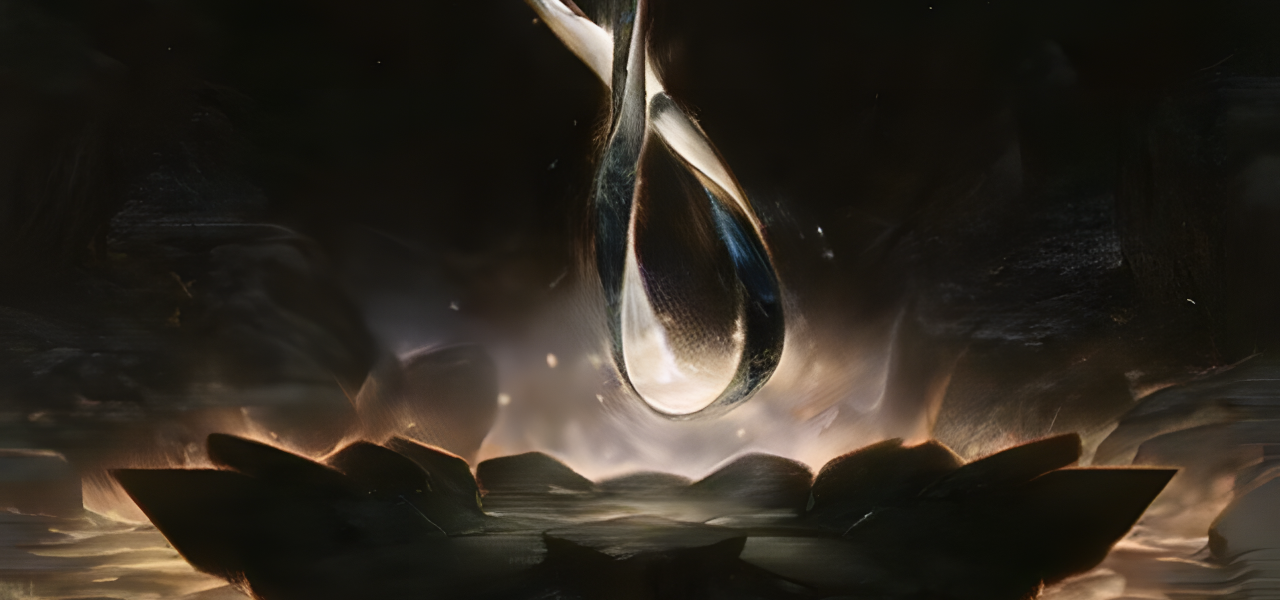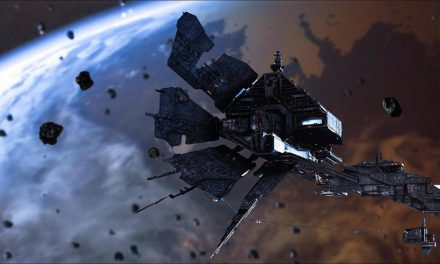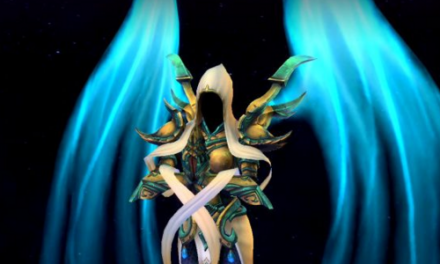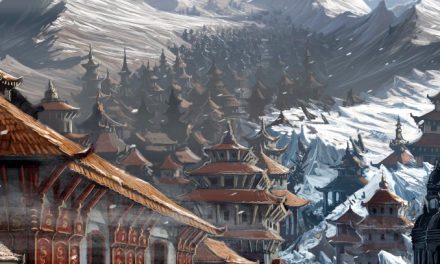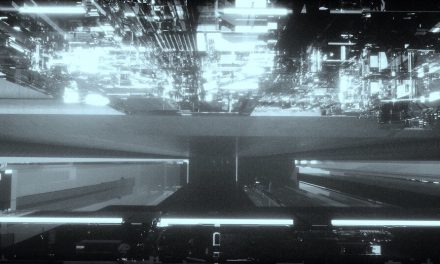For people getting their feet wet with Magic: the Gathering, there are many resources available, including pre-constructed (“precon”) decks containing everything someone needs to dive into the world of friendly play. Having gotten back into the hobby after a twenty-plus year absence, and with a bit of experience upgrading precons, I reached out to a local player group to get their advice on how to translate my idea for a fun deck to play into reality, while staying on a budget that wouldn’t break the bank.
While the email below was directed at my friends, if anyone in my larger reader base has ideas or questions, please let me know! I’m going to take some time to add copious footnotes, card links, and clarifying statements to my message to help with general readability, particularly for those who aren’t necessarily familiar with the language of the game, which can be complex and admittedly daunting at first.
Hopefully this post provides some insight into the thought process, decision-making, and balancing acts that go into designing, customizing, and playing a particular deck, while not being overwhelming enough to scare people away from the idea of building their own. The process can be exciting and is like fitting together a puzzle where you only have an idea of what the final picture will look like, and the constraints about how many pieces to use are up to you.
All in all, I asked my friends a simple question, followed by a lot (a lot) of analysis, which I hope will spawn a great deal of discussion among the group:
Is this deck viable on a budget, and if so, how?
As most of you know, currently I run five commander decks1: three are “turn-sideways” aggro decks2 (Chishiro, Strefan, and Atarka), one pillow fort/stax build3 (Breena), and one I’m still figuring out how to make work (Ranar).
As such, I was starting to look farther afield for new mechanics to tinker with, particularly with win conditions other than straight combat damage, and/or decks that can play at instant speed4. As much as I love tokens and enchantments, I think there are quite a few decks in our group that cover those bases5. And I really, really like the ping deck6 [player] put together, but that’s their deck and they absolutely nailed it. I’m also a big fan of the Infect/Toxic mechanics7 but I know that’s only a sometimes treat so I wanted something more consistently playable.
This all lead me to artifacts, and the idea of making an instant-speed colorless8 (yet non-Eldrazi9) deck. I found some suggestions/builds online, but when I threw them into Moxfield10 my eyes bugged out at the price. My current decks are just upgraded precons and are worth about $110 on average, while the decklist I thought looked the most interesting ended up being upward of $600. Even after removing cards that were prohibitively expensive (without crippling the deck’s overall effectiveness) it’s still just shy of a $300 list price.
I wrote up the deck on Moxfield to make it easy to see where I’m starting from: Infinite Artefacts 11
Cards I’ve initially cut from the competitive-level decklist are listed in the “Sideboard”, but still contribute to the overall deck cost. Cards I thought may be good replacements and/or options are in the “Considering” list at the bottom of the page, and do not contribute to the listed cost.
And so here’s where my ask comes in: can you recommend a way for this deck to become a successful on a budget?
Before we get into theorycrafting, I wanted to explain some of my thoughts and observations about how the deck works and what I’m looking for the deck to provide.
Win Conditions
Other than turning sideways12 and surprising people by casting artifacts at instant speed13, its alternate win conditions are to blast people with the Aetherflux Reservoir14 or just ping them down with an infinitely large Walking Ballista15 (the second most expensive card I’ve kept on the list).
The deck can amass some crazy life gain via the combination of Aetherflux Reservoir, Sensei’s Divining Top, Mystic Forge, and any one of the many mana reduction artifacts I have, doubly so if Forsaken Monument is also in play16.
The deck can also result in infinite mana via the Basalt Monolith and Forsaken Monument and/or building insane mana pools thanks to Horizon Stone.17
There are two tutors18 which let me get necessary cards in hand, Kuldotha Forgemaster and Inventors’ Fair.
Protection and Defense
Using Liberator, Urza’s Battlethopter as my commander provides a cheap way to ensure my deck plays at instant speed, while also offering some measure of defense with its flying and pumpability19. If Liberator gets taken out, Shimmer Myr provides a similar speed ability. Add in an Unwinding Clock and all of my mana rocks20 untap during each opponent’s turn, ensuring I have mana to keep them on their toes21.
Artifacts are notoriously easy to wipe from the board22 which is where cards like Scrap Trawler and Myr Retriever come in, as well as general protection cards like Soul of New Phyrexia, Cryptothrall, and the Darksteel Forge (the most expensive card remaining in the deck at $40) come into play23. There’re limited options for colorless removal spells24, so I’ll take what I can get (Karn, Ugin, all my instant spells, All is Dust, Unstable Obelisk, Spine of Ish Sah, Lux Cannon).
One sneaky interaction I see is using Abstruse Archaic‘s activated ability on Wandering Archaic‘s triggered ability, forcing someone to potentially pay [4] or give me two copies of a protection spell they cast in response to a board wipe.25
Mana Generation
Though I don’t have many high-cost cards in the deck26, I have many mana sources to ensure I hit my ramp27. Multiple 2-, 3-, and 4-cost mana rocks and at least 4 cards which reduce the cost of my spells hopefully guarantee that this deck won’t mirror the ramp problems I have in so many others28. Add in two ways to untap artifacts (Unwinding Clock and Clock of Omens), four Urza lands29, and the never-emptying mana pool from Horizon Stone, hopefully I’ll be okay on the generation front.
Deficiencies
I’m no pro deckbuilder by any stretch of the imagination so I’m sure I only see the low-hanging fruit, but I am aware of a few potential pitfalls in this deck. Many issues facing colorless players revolve around the inability to deal with board wipes, limited graveyard recursion30, and few targeted removal spells. I’m hoping this deck is balanced enough that I can go for the combat win if my infinite(s)31 don’t go off, but the lack of response to large boardstates on others’ fields32 (particularly other artifacts or enchantments) make the potential for long-play difficult.
There is exactly one creature with trample in the deck33, but hopefully the inclusion of Suspicious Bookcase and Rogue’s Passage34 help with that. I also see how unsuited this deck is to handling opposing evasion35, other than continual life-gain via Tomb of the Spirit Dragon and Forsaken Monument.
Without equipment36 to provide trample, evasion, or other attack buffs, I worry that my creatures are going to get outclassed very quickly unless I can pull out It That Betrays37 on the jump and start becoming The Problem™38. However, that’s something of a last resort as I don’t want to rely on Eldrazi for my artifact deck’s success.39
Provided I can keep Endbringer and/or Canoptek Spyder in play I think my card draw is alright.40 The Mystic Forge helps expand the cards I can play per turn, particularly when combined with the (expensive) Sensei’s Divining Top, but unless I start throwing a Mirage Mirror at the above every turn, that’s about it. Definitely something for me to think about, particularly for a deck designed to play on everyone’s turn and not just on my own. Then again, I do have Abstruse Archaic and Rings of Brighthearth that can also copy abilities, so maybe I’m okay after all?
Cost Considerations
So the most expensive cards remaining in the deck after my cuts are the aforementioned Walking Ballista and Darksteel Forge.41 I feel the latter is absolutely essential to keep the deck viable, and the former is the key to an alternate win condition.42 As much as I’d love to get Ugin, the Spirit Dragon back in the deck for more removal, or the Commander’s Plate to make either of my two flyers into a powerful defender, they’re just too much of an investment for a casual hobby.
Colorless is problematic not only because Wastes (the only Basic Land I’m aware of that can generate colorless mana) are not cheap, but even with some of the reprints in recent sets43 many of the cards that help make this deck work are $2–$5. I looked at the artifact-focused/colorless precons (including Eldrazi Unbound, Lorehold Legacies, and Thinker Time)44 to see if they had enough cards that could fit into this deck to warrant picking them up, but unfortunately there didn’t seem to be enough cross-over to justify the cost.
I’m personally not a fan of using proxies45 (I’m fine if others want to use them, I just prefer not to myself), so in my mind it really looks like my options to cut down on this deck’s price tag are to hamper its core abilities (e.g. Walking Ballista for the alternate win condition, Darksteel Forge for protection, Sensei’s Divining Top for card draw and life gain, Inventor’s Fair for a second tutor and consistent life gain). The removal of those four cards alone saves ~$100 off the top though, which is almost one-third the cost of the deck, so it’s really a question of how essential those cards are to the performance of the whole. The most expensive card I’m considering adding (Darksteel Monolith) is a whopping $8, and definitely isn’t necessary to the success of the deck, so I’m not stressing about the ones in that “Considering” list bumping up the total pricetag so much as the ones already in the deck are.
Conclusion
As much as I’d love to make a pure artifact deck that doesn’t rely on any Eldrazi to function, I think the cards I’m keeping in this deck are just too useful to pull out at this time, and the same goes for the higher-priced cards on the list as well. I’m not opposed to my first constructed-from-scratch deck to cost a bit more than my precon upgrades,46 but with the frequency I currently play Magic, spending more than $200 on a deck is excessive, and $300 certainly so. I’m hoping some of you have suggestions for alternative cards or strategies that can help fulfill the same roles and/or help the deck remain playable on a more budget-friendly basis.
I welcome any and all feedback, including if people think this idea simply isn’t very viable, and greatly appreciate the thoughts and experience this group brings to the game table. Thank you all and happy new year!
—Poetics
Header image: an upscaled version of the card Horizon Stone, originally drawn by Noah Bradley
- a popular format of Magic which revolves around a 100-card deck where there are only one of each card, helmed by a “Commander” creature ↩︎
- meaning their singular purpose is to win through combat ↩︎
- “pillow fort” means that it encourages the other players to attack one another instead of me, and “stax” means the deck can slow down or prevent others from playing effectively, generally discouraged in casual play ↩︎
- most decks, relying on “permanent” cards and sorcery spells, are largely only active on their player’s turn, while “instants” can be played on anyone’s turn and in response to other actions. See my primer on MtG basics for more information ↩︎
- while it’s by no means prohibited, some people can feel that it’s something of a faux pas to play the same commander or a deck that is very similar to someone else ↩︎
- a particular deck that focuses on doing a single point of damage to players in response to almost any action they take ↩︎
- a special win condition where if someone gets 10 “poison counters” they lose the game. Since it can get out of hand very quickly, decks focused around this win condition are usually discouraged in friendly play ↩︎
- artifacts are some of the only cards in Magic that are not associated with the five basic colors ↩︎
- the Eldrazi being a very popular, and arguably overpowered, faction of colorless monsters that have recently seen a resurgence in the game ↩︎
- a very popular site for theorycrafting/brainstorming decks, as well as seeing the price/value of cards and entire decks ↩︎
- if you hover over a particular card you can see what it does without having to open up a new window; Moxfield is great like that ↩︎
- a euphemism for combat, since most creatures have to tap (or “turn sideways”) to attack ↩︎
- most all artifacts can only be cast during the caster’s turn, and not on other players’ ↩︎
- simply put, if I manage to get at least 50 life, I can do 50 damage to any target, which is normally enough to knock someone out of the game ↩︎
- which, if it gets big enough, can lessen its own power to hit an opponent for 1 damage. Do that enough times and they run out of life ↩︎
- this interaction may take some explaining. The Aetherflux Reservoir grants me one life for each spell I’ve cast in the turn (i.e. 1 for the first, 2 for the second, 3 for the third, and so on). Sensei’s Divining Top lets me put it on top of my library for free, and the Mystic Forge lets me cast an artifact from the top of my library. With any mana cost-reducing effect, that makes it free, meaning I can keep doing it over and over, gaining more and more life each time, for free. The Forsaken Monument gives me additional life every time I cast a spell, rapidly accelerating the combo effect ↩︎
- the Basalt Monolith generates three colorless mana, but costs three mana to untap. The Forsaken Monument means that when it taps, it instead generates four mana, meaning it can be tapped and then untapped with some left over, resulting in a potentially infinite mana pool. Horizon Stone creates an effect that its owner’s mana pool doesn’t empty as phases or turns end, so that mana never goes away and can be used for anything in the deck (since everything costs colorless mana) basically for the rest of the game ↩︎
- cards which let you search the deck for other cards, named after the first such card, Demonic Tutor ↩︎
- “Flying” means that it can block other creatures with flying, and can’t itself be blocked except by the same. Something being “pumpable” means there’s an easy mechanism for it to increase its power and/or toughness ↩︎
- a colloquial term for artifacts which generate mana, of which this deck has many ↩︎
- since I can freshly generate mana on each opponent’s turn, and cast my spells on their turns, it means any card in my hand could be a danger to them at any time ↩︎
- there are quite a few “destroy all artifacts” spells in the game, which would absolutely ruin this deck, so protection is vital to its viability for play ↩︎
- these cards either protect my artifacts from “Destroy” effects, damage, or from being directly targeted by opponents (via “Hexproof”) ↩︎
- meaning spells which destroy, exile, or otherwise remove cards from other players’ boards ↩︎
- okay, this one takes some explaining. A “triggered” ability activates whenever a particular condition is met, while an “activated” ability is done by paying a cost, whether in mana, tapping a card, paying life, or whatnot. The Abstruse’s ability allows me to use my Wanderer’s ability twice in response to the same spell, meaning it triggers twice. The opponent casts one spell (for example, to save one or more of their own creatures) and unless they pay a lot more mana, I get to cast up to two copies of it as well, potentially saving my board from being blown up. It’s a complex interaction, and a very useful one if I can pull it off when I need to. There are many such interactions with this deck, making the Abstruse a very valuable addition ↩︎
- each Magic deck is said to have a “curve” which represents how many cards of what mana cost exist in a deck. High-curve decks have a higher concentration of high-cost cards, making them more viable in the late game, while low-curve decks tend to excel in the early game. You can see this deck’s curve at the bottom of its Moxfield page, with an average mana value of 3 (fairly fast) ↩︎
- “ramping” is the ability to pay mana for spells. Since you can play 1 land for free each turn, if you’re able to spend more than that much mana per turn, you’re potentially at a large advantage over your opponents, hence “ramping up” ↩︎
- I’m a little infamous for absolutely never getting my cards which help generate mana early enough in the game to matter ↩︎
- land cards which produce multiple colorless mana if you have several of them out ↩︎
- the ability to get cards out of the graveyard and back onto the battlefield ↩︎
- the processes of “going infinite”, as described above with the life and mana generation, where numbers can get arbitrarily large ↩︎
- meaning if my opponents have a lot of cards on their battlefield, I don’t have good ways to address that ↩︎
- meaning that combat damage it does can potentially reach the player, even if it’s blocked ↩︎
- two cards which make a creature, no matter how large or small, unblockable so all their damage is done directly to an opponent ↩︎
- creature effects like flying, which limit the number of potential creatures which can block an attacker ↩︎
- special artifacts which get “attached” to other creatures in order to power them up or give them new abilities ↩︎
- It That Betrays has the special ability “Annihilator” which means whenever it attacks, the person I attack has to sacrifice two cards, which due to the creature’s next line of text, get moved to my board instead of being destroyed ↩︎
- at different times in casual games someone will be identified as “the problem” that everyone else needs to deal with, either because they have a very dangerous set of cards on the board, far more life than everyone else, or similar circumstances. While generally light-hearted in tone, it can represent players having identified a very real threat in the game ↩︎
- here’s one big difference between casual Commander play and competitive play; in casual games most decks revolve around a particular theme while in competitive it’s all about what card mechanics will eke out the win. Since I want to focus on artifacts on this deck, I don’t want too many Eldrazi cards included. While they’re also colorless cards, it’s a different class/faction and so doesn’t exactly fit my theme ↩︎
- the ability to draw cards, meaning you’re more likely to get the card(s) you need and have them in hand, is essential to winning a game of Magic ↩︎
- while Magic can have the (rightful) reputation for being a money sink, for many/most casual players, $40 for a single card is a huge, huge expense. I think my most expensive single card to date was $18, and that was for a deck that still isn’t worth more than maybe $115 that I play all the time ↩︎
- meaning other than pummeling people during the combat phase ↩︎
- Magic often includes new printings of older cards as they release new sets, which makes them more accessible and thus cheaper to acquire as one-offs ↩︎
- pre-constructed deck releases all focused around either colorless creatures or artifacts. The cards included in precons are often more valuable than their collective price tag ↩︎
- in lieu of expensive cards, some casual players have “proxies” or representations of those cards with all of the rules text, as a way to build the decks they want without relying on luck or investing so heavily into the hobby ↩︎
- meaning I’ve taken preconstructed decks and replaced a few cards here and there to streamline them or make them more effective ↩︎

